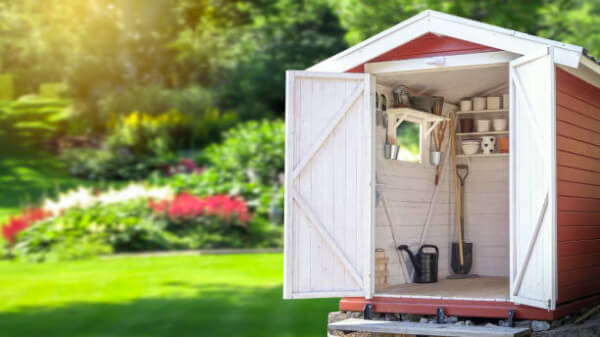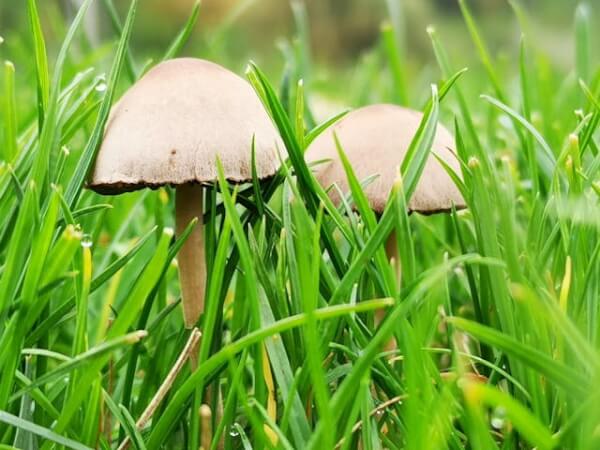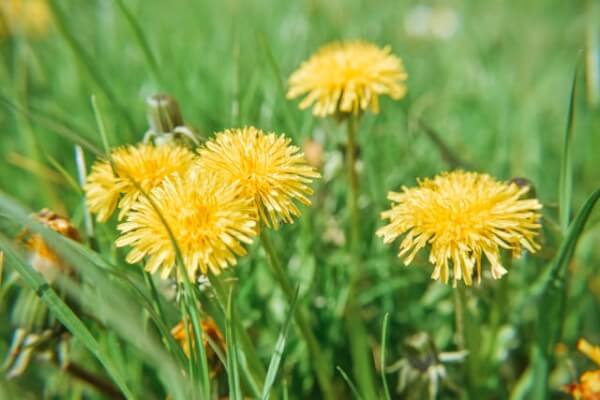
Lawn blemishes are unsightly, persistent and can put a real dampener on your carefully curated lawn.
Not to worry, here at Hayter® we have plenty of experience dealing with lawn blemishes in ways that minimise damage to your lawn, so you can get right back to enjoying your Hayter stripes.
Before we get started, make sure you have the right tools for the job:
- protective garden gloves
- overalls
- a garden fork or spring tine rake
- trowel
- rake
- hand weeder
- fertiliser
- top feed.
How to get rid of moss in grass
Moss appears in lawns for a number of reasons, but typically crops up due to poor drainage, heavy foot traffic and excessive shade.
To get rid of moss in your grass, you should be routinely scarifying your lawn, ideally at the end of spring (around May) and the end of autumn (around October).
To scarify your lawn, simply use your rake to remove the moss and thatch from the garden. If the size of the lawn is quite large, you can also use mechanical scarifiers to make the job less strenuous.
Alternatively, if your lawn is small enough to tackle by hand – or if only a small patch of the lawn is affected – you can use a less heavy-duty spring tine rake.
To help the lawn heal back to its original glory, aerate the soil with your garden fork. Aerating is completed by puncturing the soil, aiming for a depth between two to six inches. Aerating will help improve drainage, one of the reasons moss grows in the first place, helping to future-proof your lawn against further moss growth.
Once scarified and aerated, fertilise your soil and add top feed to help the soil recover. These will help the grass grow thick, strong and green.
Scarifying and aerating is best when the soil is mild and moist, so aim to perform this task annually, in either late spring or autumn.
How to get rid of mushrooms in grass
Mushrooms can be an eyesore in grass, but there is some good news – mushrooms are a sign of healthy soil! Mushrooms cannot harm your grass and do not carry disease, nor do they take up your soil’s precious nutrients.
Still, if they are getting in the way of your lawn, you can easily remove mushrooms by simply digging them out from the base with either your hands, trowel or a garden fork. You must pull out the mushroom from the root, as this will stop the spores from dispersing across your garden.
To dispose of the mushrooms, simply bin them in your brown garden waste bin.
Regular mowing with your Hayter lawnmower and scarifying and aerating annually, will help to minimise mushroom growth. Lowering your cutting height to no more than one-third of your grass height in late spring and throughout summer will help prevent mushrooms from growing.

How to get rid of clovers in grass
Regularly mowing your lawn should prevent clovers from seeding on your lawn.
If your lawn has been left to grow wild and clovers have set in, you can remove them with a garden fork. Like mushrooms, clovers should be pulled out from the base, being sure to remove the root so the clovers cannot regrow.
Corn gluten can also be used to kill clovers, but corn gluten is non-discriminatory, meaning it will also suppress grass seeds from germination. If you are currently in the process of laying more grass seeds to heal a lawn, do not use corn gluten.
If patches of your garden are left deliberately wild, clovers are a sign of positive garden health – so these can be left to flourish.
How to get rid of dandelions in lawn grass
Regular mowing will prevent dandelions from presenting on your lawn, but if they have already grown, dandelions can be removed from the base using a hand-weeding tool.
Hand-weeding tools are longer implements, perfect for digging up long dandelions that have taken deep roots in your grass. You can also dig out dandelions by hand, though this method can be messy if the root is deeper than expected.

Get in touch
We hope this guide has been useful in helping you remove those pesky blemishes from your lawn. As always, our helpful and friendly team love to hear from you, so please get in touch if you have a question for our team.
Be sure to show us before and after photos of your lawn if you found this guide helpful! We love to share photos from our talented gardening community on the official Hayter Instagram and Facebook pages.


